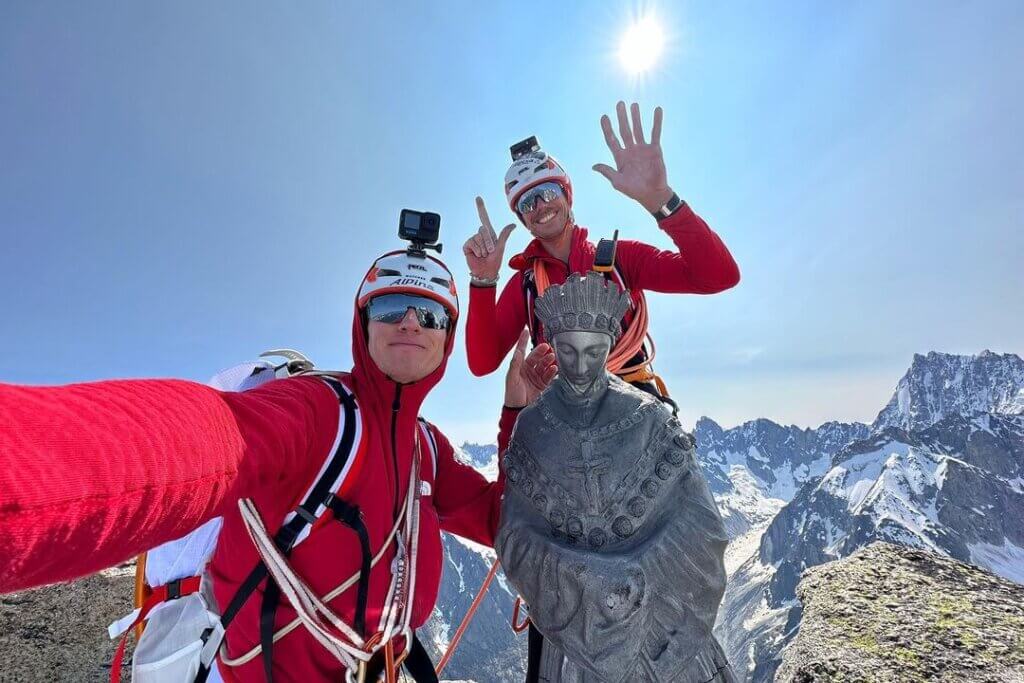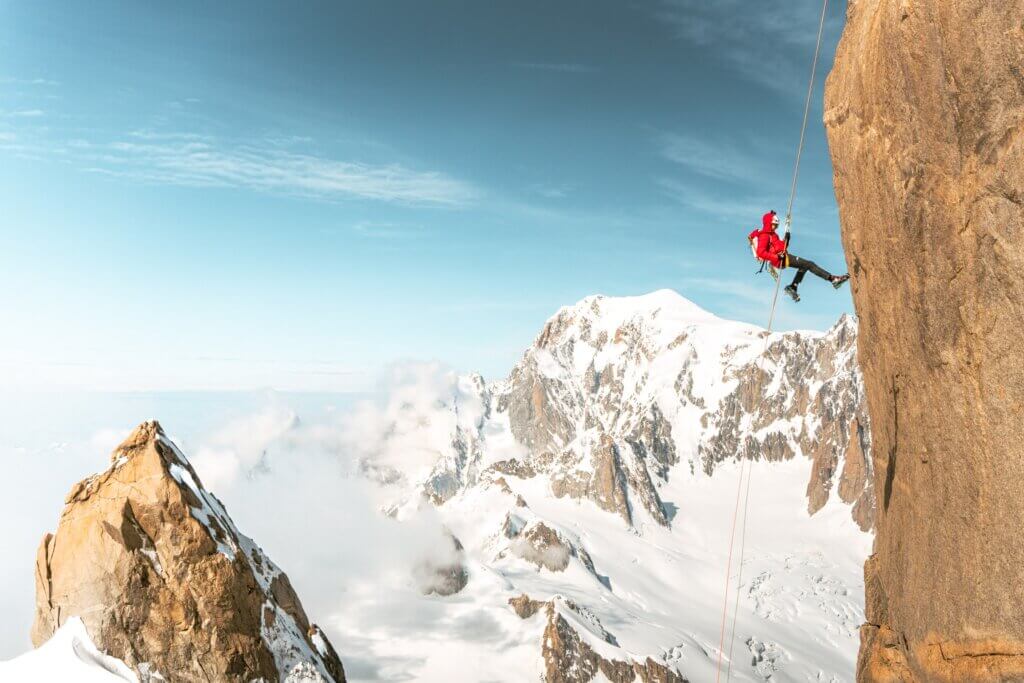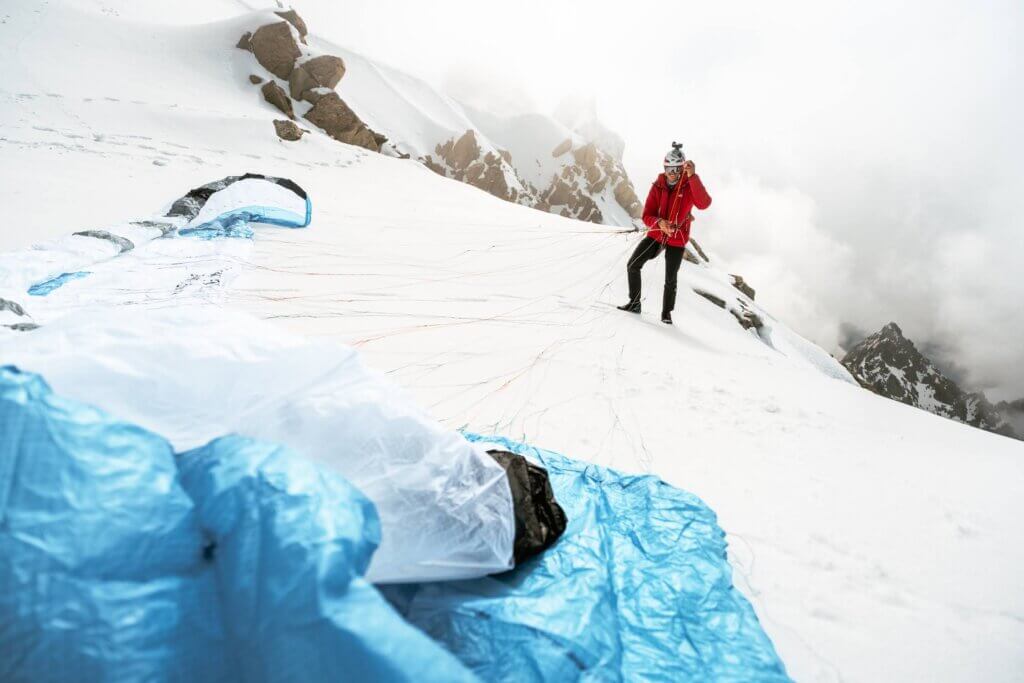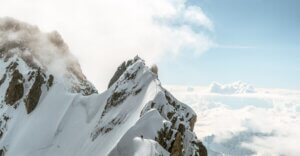In a recently concluded alpine tour that lasted ten days, the renowned French mountaineers Guillaume Pierrel, aged 38, and Lucien Boucansaud, aged 27, successfully undertook a journey spanning 130 kilometres and ascending 16,000 metres across the revered Mont-Blanc massif. Setting out from Courmayeur’s church on the Italian side, their journey culminated in Chamonix, covering the iconic summits home to the statues of the Virgin Mary, known locally as ‘Les Madones’.
A Historic Pilgrimage
Although not practising Christians, the mountaineers expressed a deep appreciation for the craftsmen who installed these statues, driven by a combination of faith, love for mountains, and admiration of its beauty. The duo reverently referred to these silent Virgins that welcomed them atop each summit as “reassuring” and “beautiful” figures transforming the mountains into sanctuaries.

Throughout their journey, Pierrel and Boucansaud followed a meticulous itinerary, navigating technically demanding routes, sometimes creating protective pathways themselves. Despite facing challenges such as unstable weather conditions, abundant snow due to a rainy spring, and even having to carve steps out of ice, the climbers persevered, opting for fast and light ascensions each day to avoid dangerous weather conditions.
A Journey Through Heritage
This endeavour was deeply personal for Boucansaud, who uncovered a familial connection to one of the Madone installations during the 1920s through photographs and letters found at his family home. The statue at Grépon, dubbed the “queen of madones,” held a special place in his heart, leading to its pivotal role in the inception of this project during a bivouac at the summit of Grépon.
Throughout their expedition, the duo traversed legendary peaks such as the Aiguille Noire de Peuterey, Dent du Géant, and Les Drus, using a mix of hiking, paragliding, and cycling, foregoing mechanical lifts in a bid to undertake a clean, self-propelled journey that honoured the spiritual and cultural heritage encapsulated by the Madone statues.
Documenting a Modern Alpine Adventure

Enriching their historic expedition is an impending documentary titled ‘La Madone’, which aims to accentuate the grandeur of this cultural heritage, retracing the climbers’ journey while paying homage to those who brought their faith to Mont-Blanc’s apex. Spearheaded by Pierrel alongside Laurent Jamet, the film, supported by FODACIM, intends to weave the statue’s tales with their modern alpine exploits captured through drone cinematography piloted by Stéphane Guigné and guided by high mountain expert Christopher Baud.
A Multisport Raid across Borders
Setting off on 6th June, the duo embarked on a multisport raid involving alpinism, ski touring, paragliding, and cycling, moving seamlessly across France, Italy, and Switzerland. Despite not being practising Christians, the climbers acknowledged a spiritual connection to the mountain, feeling a sense of protection during their journey. The endeavour encapsulated the spirit of friendship and reverence for the guardians of the Alpine summits, fostering a connection between the climbers and the silent witnesses of the mountains’ majestic beauty.

Their journey held many awe-inspiring moments, from descending with a rallying cry of “Ciao la Madone!” at Grépon to marvelling at the immaculate craftsmanship of the statues dotting their path, including the exquisite Notre-Dame-des-Drus, initially set up over a century ago.
Conclusion
Guillaume Pierrel and Lucien Boucansaud have not only paid homage to a significant chapter of alpine heritage but also strengthened a timeless bond with the silent protectors gracing the Mont-Blanc summits. Their tour, blending spirituality with an ambitious sporting challenge, stands as a testimony to endurance, friendship, and reverence for both heritage and the towering guardians of the Alps. This remarkable feat beckons onlookers to witness the transformative journey from mountaineers to modern-day pilgrims, a journey marked by reverence, spirit, and the raw beauty of the Alpine landscape.

